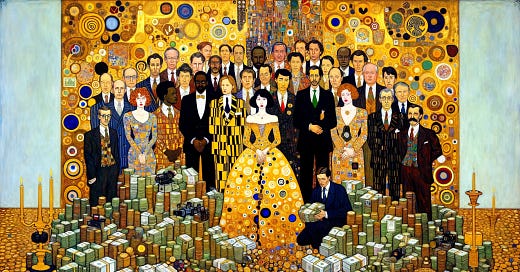Inside IFPIM's strategy to raise $1 billion for public interest journalism
We talk to Khadija Patel about IFPIM's latest, USD 250 thousand per publisher open call and the importance of measuring the impact of public interest journalism.
Welcome!
We are trialing a new format. You'll still receive the "regular" newsletter every other Thursday, but we are going to start publishing standalone pieces that focus on a single topic, funder, call, outlet, etc.
We'll begin with an interview with Khadija Patel, the former chief editor of the Mail & Guardian in South Africa, and the outgoing chairperson of the International Press Institute who currently works with the International Fund for Public Interest Media (IFPIM).
If you want to see more pieces like this, let us know by clicking the like button, sharing/forwarding the newsletter, replying to this email or subscribing below.
Media Finance Monitor: Can you briefly describe what IFPIM is and what it aims to do?
Khadija Patel: The International Fund for Public Interest Media was born out of the realization of the crisis facing news media around the world, that funding for low and middle income countries for this sector was decreasing at the time perhaps when it was most needed.
At its heart the International Fund is meant to be a financing mechanism. We're trying to get financing to media organizations at scale. We've made more than 30 grants around the world. This is core funding it is meant to support the organizational growth and stability.
At the same time we are also working on potential systemic solutions. We're trying to plug the gap in the short term but in the long term also trying to figure out things like tech regulation, national [journalism/media] funds and all of those things that might bode well for a future.
Could you talk about how much money you have raised so far and some of your very ambitious goals?
We've reached up to 60 million [USD] at the moment. The next benchmark is 150 million. Once we reach 150 million, we then go into our scale-up phase. The ambition then is vastly greater: we hope that we can get to a billion. It sounds crazy, but I think that we have to be guided by the crazy, considering the need that is deepening in many places.
Someone described your work as getting money from sources that would be very difficult for independent news organizations to accept funding from and making this money palatable.
We have three main sources of funding: the first is overseas development assistance (ODA), its government aid . Right now, our biggest donor is the US, second biggest donor is France. This is really important, because many investigative journalists won't take bilateral aid money. They won't take USAID funding, because it imperils the independence of their work. But when we accept funding from the USAID, it really is with the proviso that we will exercise our own discretion over how this funding gets to be used.
On top of ODA it’s philanthropy. But we're not trying to cannibalize existing flows of philanthropy. We're trying to ensure that there's new flows, to bring new donors to the sector. Right now, our biggest private philanthropy donor is the Ford foundation, who historically have not done much media funding outside of the US. We are looking for people who have not traditionally done media.
And the last source is from corporations. We've had contributions from Google, as well as Microsoft.
Let’s talk about the grants. Do you think its the best funding model?
We see grants as very much the short-term tactic, not the long term solution. But I think they are essential in the short term to ensure the survival and resilience of the media, particularly in low income countries, where there simply aren’t robust markets to support media.
I am now talking in my personal capacity, but IFPIM is envisaged to be a limited intervention in order for us to find a more long term systemic solution. And the long term thing might be something like Pluralis [read our January issue for more info on Pluralis]. That’s why so many of us are looking at what’s happening with what MDIF is trialing.
It might be, also, that national funds are the thing that works in many contexts. But then we have to think about what are the things that fund the national funds. Where's that [money] going to come from?
I share a lot of people’s discomfort with grants. We see organizations that develop primarily on the accessibility of grants and not necessarily on the service to an audience. Grants do have the ability to distort markets.
You have a big open call active, and one of the more surprising things was the eligibility threshold, which is pretty high. Having on average a 300K turnover in the past three years - it applies to a very specific subset of actors. What were the arguments? Why was this the best format?
Keep reading with a 7-day free trial
Subscribe to Media Finance Monitor to keep reading this post and get 7 days of free access to the full post archives.




